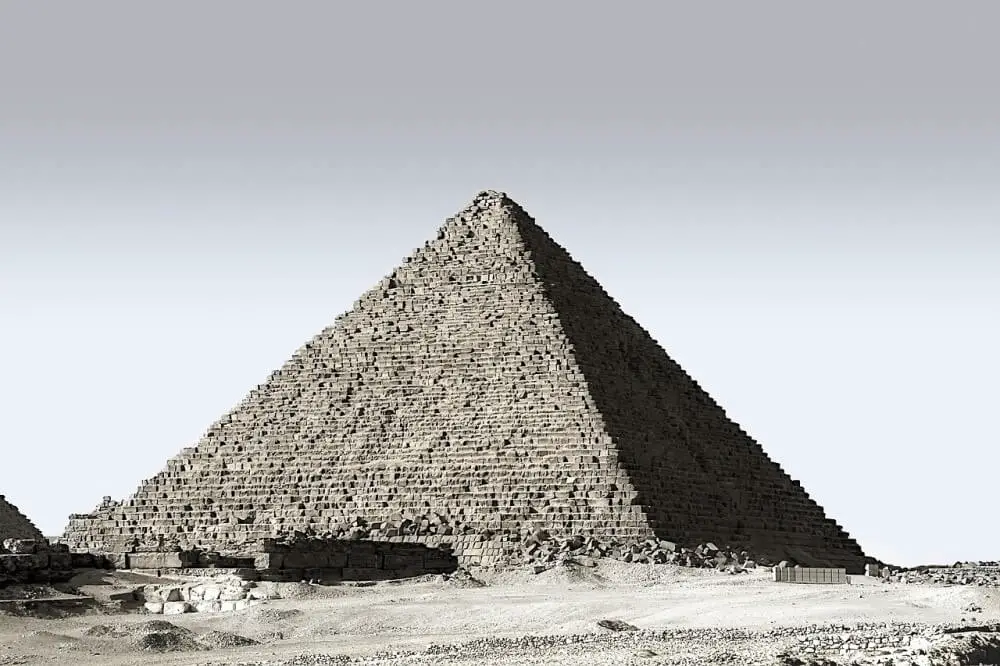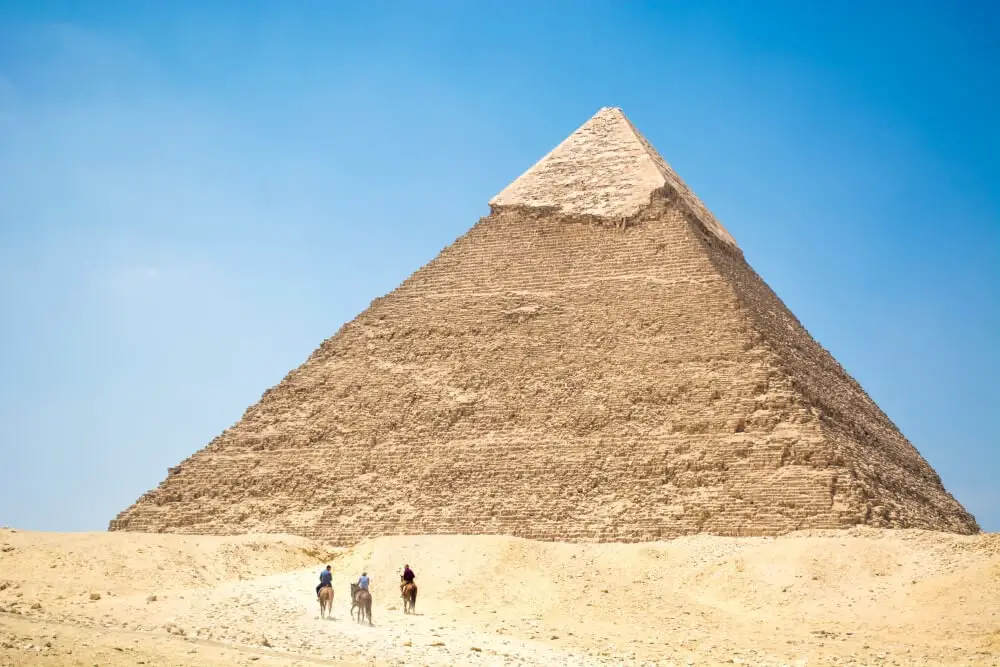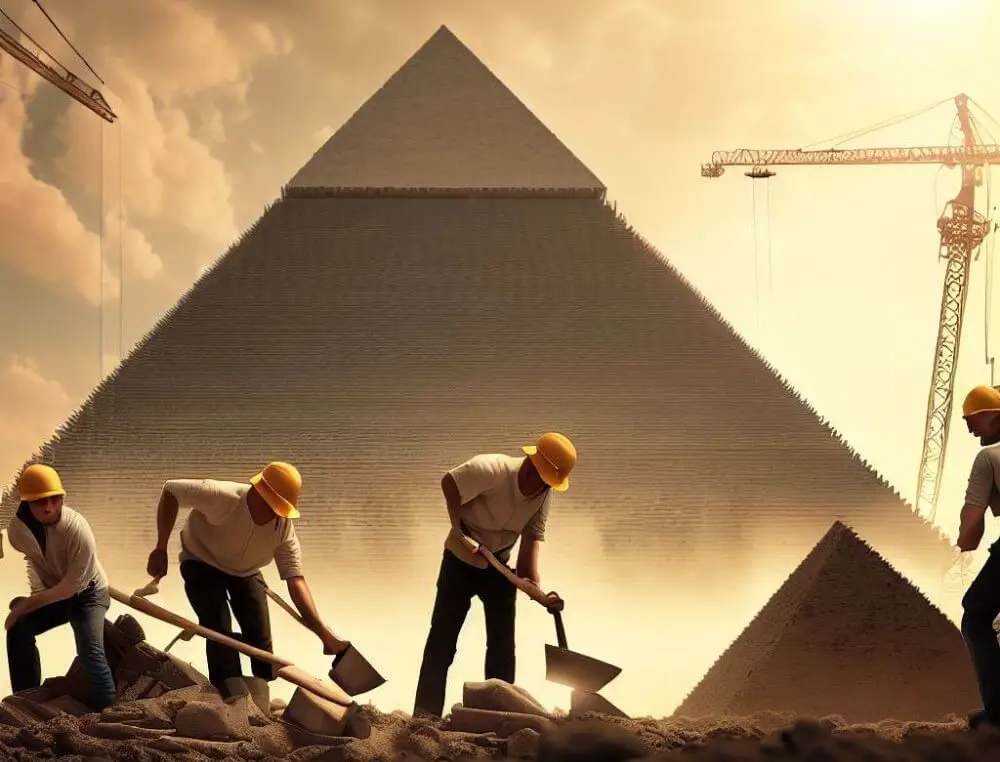The Pyramids of Giza are not only one of the true man-made wonders of the world – they are symbols of what architecture and civil engineering can achieve. Despite being built more than 4,000 years ago, visitors from around the world still marvel at their magnificence.
In fact, so wondrous is the Pyramids’ composition that, for much of its existence, no-one knew how they were built. Nowadays, with all the advancements in construction technology, we have a pretty good idea, but there are still many questions about the structures that remain.
One such question, that would help to assess how much we really know about how the Pyramids were constructed, is: would it be possible to build the Pyramids today?
In short, the answer is yes – we could theoretically build the Pyramids again today. We now know the methods by which the building materials were sourced, transported and placed, so it would be technically possible to recreate this. However, building more Pyramids is not likely, due to the practical and societal concerns that would be raised.
In this article, we’ll probe how the Pyramids were built, what the difference would be between ancient and modern construction techniques in a new project, and what challenges there would be in building new Pyramids.
But first, let’s explore the question of whether we could build the Pyramids today in more detail.
Explore our related articles:
Could we recreate the Pyramids today?
The question of whether we could recreate the Pyramids today is not as simple an answer as you may expect. There are a number of considerations to bear in mind, with the most fundamental being whether it would be possible to replicate its building specifications with our existing knowledge.
Luckily, thanks to research completed over the last couple of decades and beyond, we now have a good, if incomplete, understanding as to how the Pyramids were built. We know, for instance, that large limestone slabs were quarried, transported along the River Nile, and then placed with decimal precision onto the Pyramid.
As a result, we know roughly what it would take to build the new Pyramids from scratch. And, there’s no doubt that modern construction techniques would make the job a lot quicker.
That said, it’s worth bearing in mind the astonishing precision and intricacy with which the Pyramids were built. The Pyramids were constructed on a North-South alignment with an accuracy of up to 0.05 degrees, with stones that were levelled across its entire base within a fraction of an inch.
To this day, it’s a matter of fierce debate of just how the Egyptians managed this with the primitive technology available to them.
While recreating these dimensions is something that could be accomplished with today’s construction tools, doing it with the methods the Egyptians used would be extremely difficult. At present, we simply don’t know how they managed it all.

What challenges would there be in recreating the Pyramids?
Although it may be technically possible to recreate the Pyramids, there are other factors that come into play when it comes to recreating them. Namely, there are societal, moral and commercial barriers to the construction of such a project that would make any attempt highly unlikely.
Let’s explore these in more detail…
Construction techniques
As mentioned previously, the sheer precision and scope of the Pyramids’ construction is almost mind-boggling when placed in the context of the time it was built. For example, limestone blocks weighing up to 80 tons were hoisted up to great heights and accurately placed with absolutely no machinery.
The placing and levelling of the slabs used a technique known as ‘Cyclopean Masonry’. This essentially means fitting stones together so neatly that there is no need for any glueing substance, such as mortar or adhesive.
While modern machinery would make the task of lifting the stones a relative breeze, cyclopean masonry is another matter. If a new set of Pyramids is to be built, manually placing each rock in place with absolute decimal precision would be the required task.
There’s no doubt that to do this would be a mammoth undertaking. While modern architects do sometimes employ this technique as part of their designs, to replicate this on the size and scale of the Pyramids would require an immense amount of resources and skill.
Manpower and labour
Due to the primitive technology that they were built with, the Pyramids relied on a massive amount of manual labour to complete the project. Whether these labourers were slaves or skilled workers is up for historical debate, but it is thought that at least 30,000 people helped to build it.
Put simply, even if we assume that it was only skilled workers that built the Pyramids, this level of manpower and labour would be very difficult to source in modern times. It wouldn’t just be a matter of paying the workers, but also of where to house and how to feed them.
Indeed, the task of transporting and placing the stones into place by hand would, even today, be gruelling and demanding, even with the aid of machinery. If we were to rebuild the Pyramids, there would likely be labour laws and regulations that would prevent many of the same methods being used.

Usage and purpose
Another reason why it may be difficult for Pyramids to be built in the modern era is the original usage and purpose of the grandiose structures. The Pyramids weren’t just stunning aesthetic monuments – they were built for functional reasons.
Chiefly, the Pyramids were built to act as tombs for the pharaohs. Ancient Egyptians glorified life after death, and the Pyramids were built as a way for the pharaoh to climb to the sun god. As well as this, they were symbols of the power and prestige of the era.
Of course, in modern times, we no longer have the need or inclination to build large-scale monuments to pharaohs and sun gods. As such, the recreated Pyramids would have no useful function, other than to replicate the aesthetics of the original monument.
Without these religious and cultural contexts, building new Pyramids is likely to be seen as a waste of time and resources in the modern age.
Money
Tied to this is the question of money. As well as time and resources, there would have to be a massive monetary outlay if the Pyramids were to be recreated to scale.
For a start, there would need to be financial provisions for the housing, facilities and wages that would accompany the massive workforce needed for the project. Then, there would be the expenditure on quarrying and transporting the stonework required.
Put simply, in today’s money, the cost of building new Pyramids would be astronomical – particularly when the new building’s purpose would be purely sentimental. Because of this, it is not likely that any government or other interested party would be likely to pay the mammoth fees involved.
To sum up, whether or not we could build the pyramids today is not a question that we’re ever going to have the definitive answer to, as there is unlikely to ever be a need to recreate these iconic structures. In all likelihood, we could probably build a structure that is very close, if not a perfect replica, to the original Pyramids.
All we really know is one thing: the Ancient Egyptians were some talented builders!
For more related news, views and in-depth guides, explore more of our general building articles, featuring the 15+ longest buildings in the world.
Or, if you’d like more guides to building and architecture vocabulary, take a look at our selection of building wikis, including what the definition to ha-ha is.
Last Updated on 28 March 2023 by Michael
